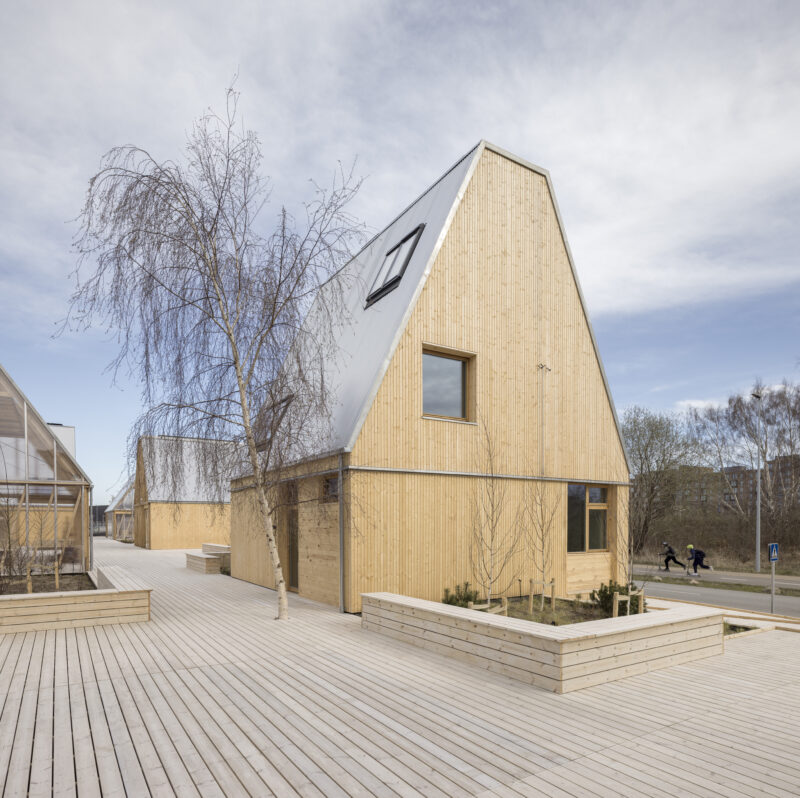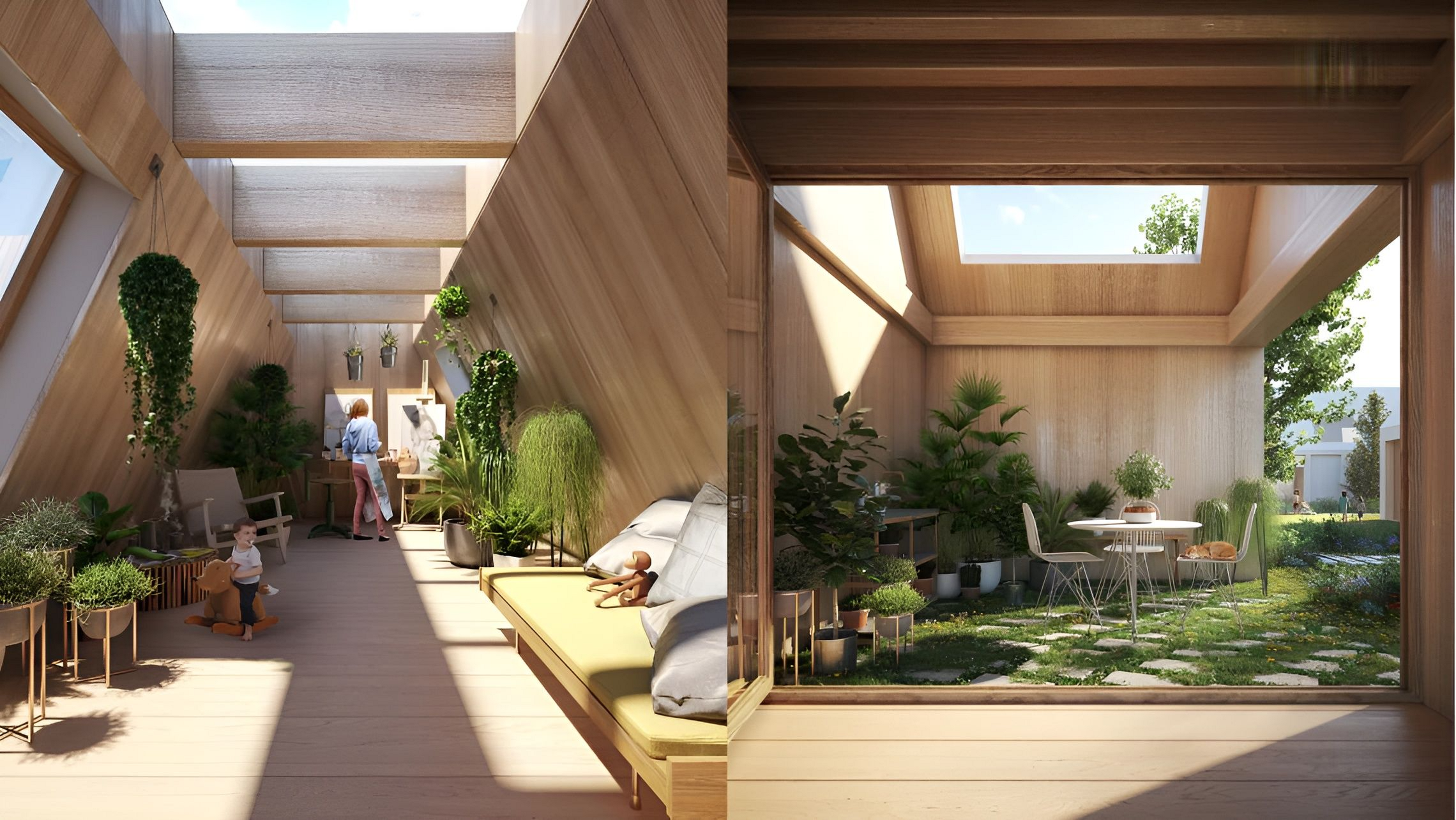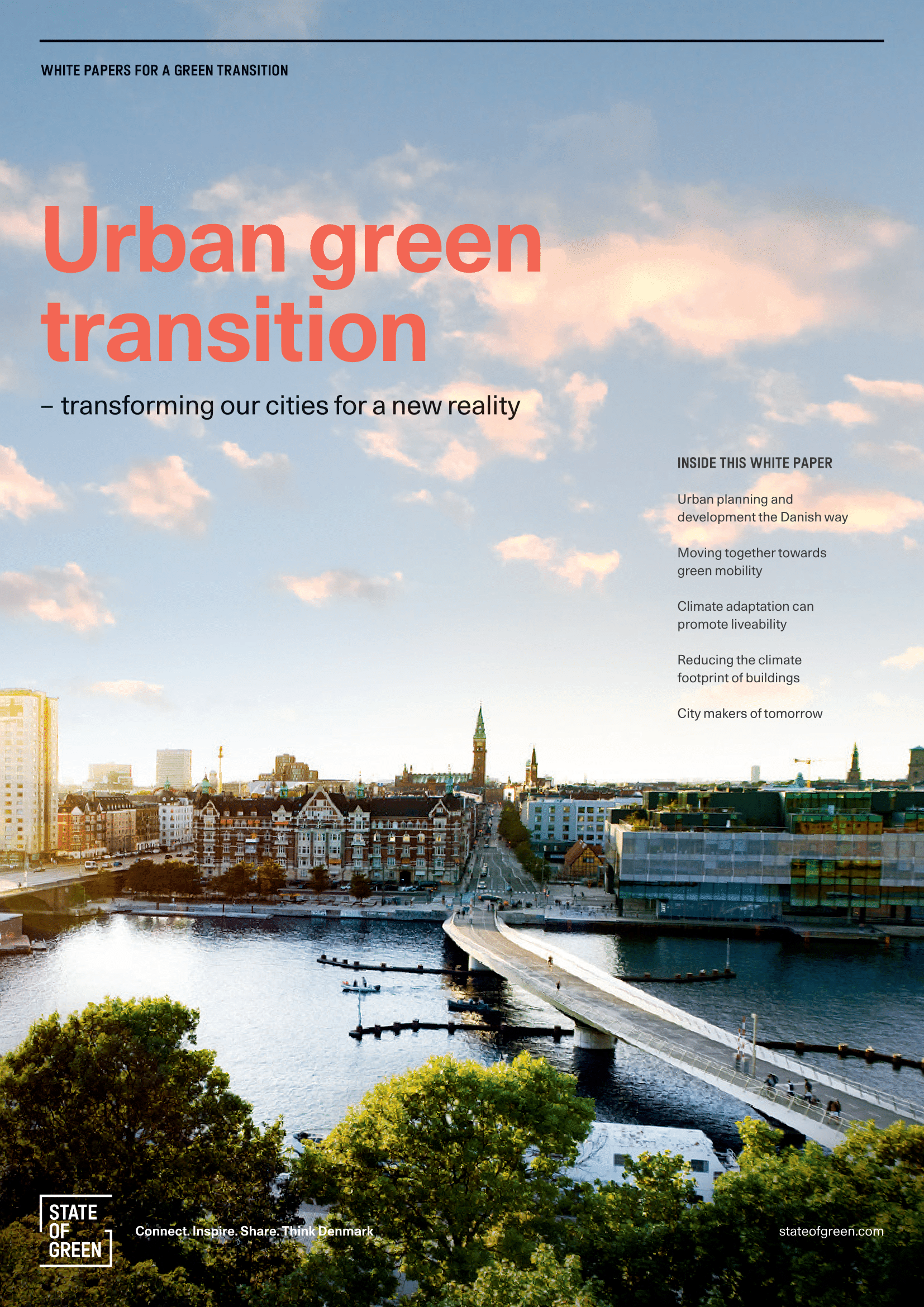To document the environmental impact of a building’s life cycle from design, manufacturing, use and maintenance, to renovation and demolition, The Compass Model, a Life Cycle Assessments calculator, was developed, enabling an assessment of materials already in the design phase.
“Living Places seeks to create a housing typology that is affordable to build at scale and healthy to live in, with an ultra low carbon footprint — using only current technology and materials. It aims to lead the way within the building industry and show how rethinking buildings can help solve some global climate and health challenges.”
Seven building prototypes have been produced, built of materials with low or positive CO₂ impact and a focus on reuse, and recycling of materials such as wood fibre insulation material and screw pile foundations. As the design features mechanical joints, the structures can be disassembled at the end of their lifetime. The prototypes furthermore hold the lowest CO₂ emissions in Denmark.













